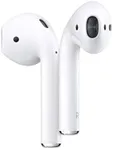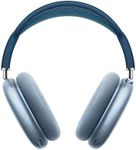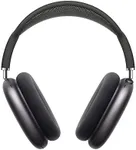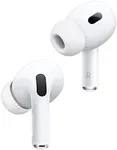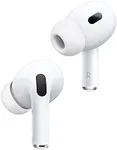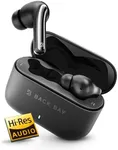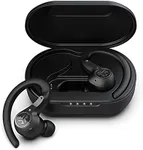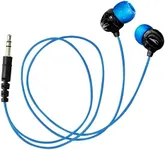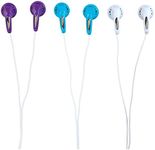Buying Guide for the Best Airpods
Choosing AirPods or similar wireless earbuds can be an exciting yet overwhelming task because there are several features to consider that affect both your listening experience and how comfortable they feel during daily use. It's important to think about where and how often you'll use them—whether it’s for commuting, working out, or just relaxing at home—as this will help you decide which features matter most. Focusing on a few key specifications can make your decision process much easier and ensure you select earbuds that fit your lifestyle and expectations.Battery LifeBattery life refers to how long the earbuds can play audio before needing to be recharged. This is crucial if you want uninterrupted music or calls throughout the day or during long trips. Battery life is usually divided into two parts: the time the earbuds work on a single charge and the additional hours provided by the charging case. Earbuds typically offer anywhere from around 4 to 8 hours on a single charge, with the case providing anywhere from 12 to 24 additional hours. If you use earbuds for short periods, lower battery life is sufficient, but for frequent travelers or those who dislike frequent charging, longer battery life is important.
Fit and ComfortFit and comfort describe how well the earbuds stay in your ears and how comfortable they feel over extended use. This is very important for users who plan to wear them for long periods or during activities like running. There are options ranging from universal fits to those with interchangeable tips and various shapes. For casual users, a standard fit may be enough, but for sports and long listening sessions, choosing a model with multiple ear tips or ergonomic shapes helps you find one that feels secure and comfortable for you.
Sound QualitySound quality is about how clear, balanced, and enjoyable the audio from the earbuds sounds. It involves bass, treble, and overall clarity. Some earbuds focus on deep bass, which might appeal to those who enjoy pop or dance music, while others aim for a more balanced sound that suits podcasts and classical music. If you’re an audiophile or care a lot about audio, look for models praised for quality and clarity; otherwise, standard sound quality usually suffices for everyday use.
Noise Cancellation and Transparency ModesNoise cancellation helps block out unwanted background sounds, making earbuds great for noisy places like public transport or offices. Transparency modes let outside sounds in so you stay aware of your surroundings, which is ideal for walking in urban areas or talking to others without removing the earbuds. Noise cancellation ranges from basic noise reduction to active noise canceling (ANC), which is more effective but may use more battery. Choose based on your environment—ANC for noisy spaces, or standard models if you're usually in quiet places.
Wireless Connectivity and ControlsWireless connectivity determines how easily the earbuds connect to your devices—most use Bluetooth, and newer versions generally offer stronger connections and longer range. Controls affect how you manage audio, calls, and sometimes voice assistants, either through touch or physical buttons. If you prefer simplicity, look for straightforward pairing and easy-to-use controls; more advanced users may enjoy customizable settings.
Water and Sweat ResistanceWater and sweat resistance measures how well the earbuds handle exposure to moisture, which is especially important for workouts or use in rainy weather. This is usually shown by an IP (Ingress Protection) rating. Basic models might resist sweat and light rain, while higher ratings endure more intense exposure. If you plan to exercise or use your earbuds outdoors, a higher resistance rating is a wise choice.
Call and Microphone QualityCall and microphone quality affects how clear your voice sounds to others during calls or voice commands. Some earbuds come with advanced microphones and noise reduction for clearer conversations, which is helpful if you frequently take calls on the go. If calls are a top priority, look for models known for high microphone quality; for occasional use, standard microphones should be sufficient.


